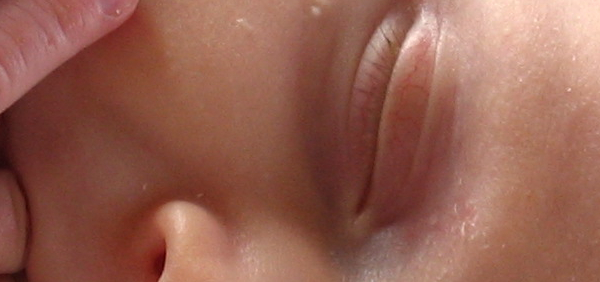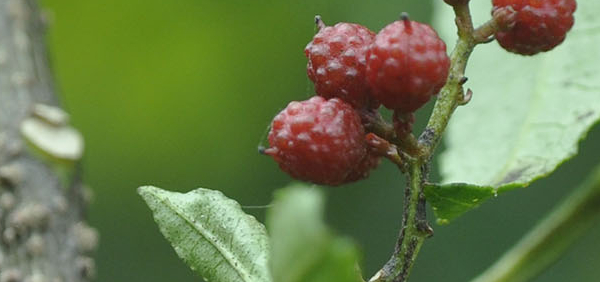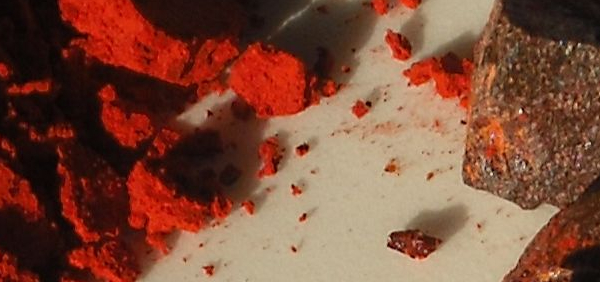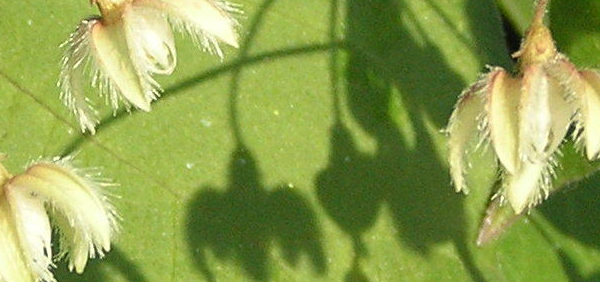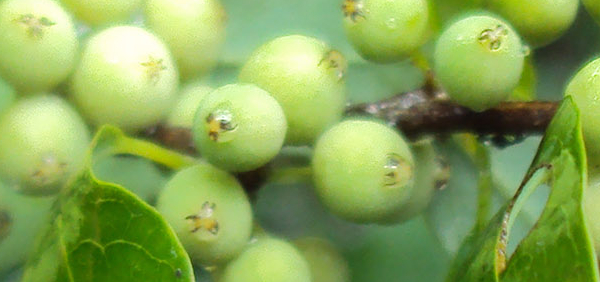medhika :
 Used for improve the shine of jewels, to wash cloths, hair and also for medicine purposes, Reetha – soapnut is a versatile medicinal herb. It is used for treating skin diseases and psychiatric disorders.
Used for improve the shine of jewels, to wash cloths, hair and also for medicine purposes, Reetha – soapnut is a versatile medicinal herb. It is used for treating skin diseases and psychiatric disorders.HISTORICAL AND MYTHOLOGICAL REVIEW:
Fenugreek is believed to have been brought into cultivation in the Near East. It is uncertain which wild strain of the genus Trigonella gave rise to domesticated fenugreek, charred fenugreek seeds have been recovered from Tell Halal, Iraq (carbon dated to 4000 BC), and Bronze Age levels of Lachish and desiccated seeds from the tomb of Tutankhamen.Cato the Elder lists fenugreek with clover and vetch as crops grown to feed cattle.
In one first-century A.D. recipe, the Romans flavoured wine with fenugreek.In the 1st century AD, in Galilee, it was grown as a food staple, as Josephus mentions it in his book, the Wars of the Jews.
Taxonomical Classification
Kingdom: Plantae - Plants
Subkingdom: Tracheobionta - Vascular plants
Superdivision: Spermatophyta - Seed plants
Division: Magnoliophyta - Flowering plants
Class: Magnoliopsida - Dicotyledons
Order: Fabales
Family: Fabaceae
Genus: Trigonella
Species: Trigonella foenum-graecum
Allied species:
-In Ayurvedic classics, Methika Trigonella foenum is categorized as follows –VERNACULAR NAMES
Sanskrit: methika, methini, dipani, gandhaphala, vallari, amnthya, mishrapushpa, kairavi, pitbijaEnglish: fenugreek
Hindi: Methi Danaमेंथी
Urdu: Methi
Telugu: Menthulu
Bengali: Methi মেথি-গাছ
Marathi: Methya
Konkani: Methi
Gujarathi: મેથી
Tamil: Vendayam
Malayalam: uluva
Kannada: Menthya
Punjabi: Menthiya
Arabic: hulba, hilbeh
Spanish: Fenogreco
Japanese: koruha, fenu-guriku
Chinese: 胡芦巴(hú lú bā)
French: Fenugrec
German: Bockshornklee
Burma: Penantazi
Nepal: Menthiyam
Persian: Shanbalileh
Sinhalese: fenugreek
Greek: Fenugreek
Varities:
There are two species of the genus Trigonella viz. Trigonella foenum graecum (common methi) and Trigonella corniculata (Kasuri methi).There are two varieties of Methika Trigonella foenum –
- Laghu methika – It is used as vegetable (Patra shaka).
- Brihat methika – It is used as cattle food (Pashu khadya)
Definition
Synonyms
Synonyms in Ayurveda: methika, methini, dipani, gandhaphala, vallari, amnthya, mishrapushpa, kairavi, pitbijaThe English name derives via Middle French fenugrec from Latin faenugraecum, faenum Graecum meaning "Greek hay
Rasa: Katu Tikta
Guna: Laghu Snigdha
Veerya: Ushna
Vipaka: Katu
Karma: Vathakaphahara
They are used externally in poultices for boils, abscesses and ulcers, and internally as emollient for inflammations of the intestinal tract. They find application also in Veterinary medicine, and are used in poultices, ointments and plasters, and form a constituent of condition powders for cattle, horses and sheep.
Cultivation:
Propogation:
Harvesting:
Fenugreek can be hand-cut or mechanically harvested by farm cutting equipment or by conventional mowers, conditioners and rakes. The use of rectangular balers and forage harvesters have also been recommended. If fenugreek is cut under dry conditions, the plant can be left in thin layers to cure on the soil. If harvesting conditions are wet, it is recommended to oven-dry the plant or to make it into silage. Another way to use fenugreek forage is to cut it after seed harvest, forage being thus similar to straw, with a relatively low palatabilityPhytochemistry:
Fenugreek herb contain chemical composition like diosgenin, gitogenin, tigogenin, trigonelloside, yomogenin, tetosides, graceunin A, B, C, H, I, J, K, L, M, trigofoenosides, choline, trigonelline, yamogenin, gitogenin, diosgenin, neotigogens, and tigogenin etc. It contains nutritional contents like thiamin, riboflavin, folic acid, niacin, riboflavin, B6, vitamins A, C, and K, copper, calcium, selenium, zinc, manganese, magnesium, and potassium.PHARMACOLOGY:
Parts used for medicinal purpose
Leaves, Seed, ,Dosage:
- In powder form: Take three to six grams of Fenugreek powderonce or twice daily with plain water after meals.
Antidote:
-not knownSubstitute:
In India, the roasted ground seeds are infused for a coffee substitute or adulterant.Adultrants:
-Except for three, all 50 food items tested in a government laboratory have been found adulterated.Only two spices -- fenugreek (methi) and black pepper -- and sesame oil (seed oil with medicinal value) were found pure.
Controversy:
-Fenugreek acts as an estrogen receptor modulator and was shown to stimulate breast cancer cells in vitro Patients with hormonal-sensitive cancers should consult their physicians before using fenugreek.Commercial value:
India is a major producer, with fenugreek production in Indiaderived from numerous states. Rajasthan accounts for over 80% of Indias output.Morphology:
Plant habit Erect or prostrate, straight or profusely branched 20-130 cm in length Stem Circular to slightly quadrangular, greenish, often characterized by pinkish color due to anthocyanin accumulation under field condition 0.5-1 cm in diameter Leaf Simple and trifoliate, distinctly petiolate, stipulate; leaf lamina oval or orbicular with an entire margin. The petioles and leaf lamina varies form greenish to pinkish in the field 1.5-4.5 cm × 0.8-1.5 cm Petiole Pale green, pubescent, often anthocyanin tinged Very small; 0.5-1.1 mm Flower Yellow when young but white on maturity 1.6 - 2.2 cm Calyx Campanulate, pale green, pubescent 6 - 8 mm Individual sepal Pale green, pubescent 1 3 - 19 mm Corolla Papilionaceous, white, papery 1.5-1.9 cm Standard/Vexillum/Banner White, papery 1.5 - 1.8 cm Keels/Carina White, papery 6-10 mm Wings/Alae White, papery 4.5 - 5.5 mm Anther lobes Bright yellow, rectangular 1 -1.5 mm × 0.4- 0.5 mm Filament Hyaline, tubular 1. 7 - 1.9 mm Ovary Deep green, glaucous 1.8-2.5 mm Stigma Pale green, glaucous 1.5 - 2.1 mm Style Pale green/hyaline glaucous 0.2 - 0.5 mm Pollen grain Oval (70-90 %) to circular, orbicular, ellipsoidal grains (10-30 %). Hyaline; stained pink or red when treated with 0.5 % acetocarmine 0.032- 0.042 mm × 0.025 -0.027 mm Ratio of terminal to axillary flowers All flowers yellow when immature and white when matured Extremely rare, however the ratio varies as 1:8/1:10/ 1:11/1:13 Number of pods per plant and pod dimensions Pods brownish or yellowish brown with mucronate tips 2-8/plant 9.5-18.6 cm × 0.2-0.4 cm Seed Rectangular to oval in shape with deep grooves between the radicle and cotyledon Varies in color form pale brown to golden yellow 10-20/pod 3-5 mm × 2-3 mmHistology:
Leaf anatomy -The upper (adaxial) and lower (abaxial) epidermis cells formed the boundary of the leaf blades as a continous covering of the leaf as observed in cross section. Epidermis was protected by a layer of cuticle. Mesophyll was differentiating into pallisade and spongy parenchymatous cells having large intercellular spaces. These cells were filled with densely packed chloroplasts along with the other cell organelles. The midrib was composed of single vascular bundle. The phloem was composed of sieve tubes, companion cells and parenchyma. Xylem was made up of rows of bluntly angular vessels interspersed with parenchyma. The anatomy of healthy fenugreek leaf is characterized by epidermis, parenchyma cells and usually by large intercellular spaces in photosynthetic areas.Geographical distribution:
Fenugreek is naturally found in field verges, uncultivated ground, dry grasslands and hillsides in semi-highland and highland regions (Alaoui, 2005). Fenugreek is grown as a cool season crop in India and the Mediterranean region, both irrigated and as a rainfed crop. It grows on a wide range of preferably well drained soils with a pH ranging from 5.3 to 8.2. Wet soils are not suitable. In cooler areas, growth is slow and weak during cold periods and it is better grown as a summer crop. The seeds require warm dry weather for ripening and harvest (FAO, 2017; Alaoui, 2005). Fenugreek optimally grows in places where annual temperatures are in the range of 8-27°C and where annual rainfall is between 400-1500 mm. It is a full-sunlight species (Alaoui, 2005).ECOLOGICAL ASPECT:
-Ecology Fenugreek is basically a warm temperate crop with cultivars adapted by long domestication to warmer and colder environments.Plant conservation:
-not threatenedGeneral Use:
- The herb is helpful in lowering blood sugar and cholesterol levels.
- On external application, Fenugreek helps heal superficial wounds more quickly.
- Because of its rich protein content, the herb is an excellent ingredient in haircare and skincare products.
Therapeutic Uses:
- Deepani: This herb improves the digestive fire.
- Vatahara: It balances vata dosha disorders like paralysis, constipation, neuralgia, and bloating etc.
- Kaphahara: It balances kapha disorders like asthma, bronchitis, chest congestion, and cough etc.
- Prameha: This herb is very much effective in type 2 diabetes mellitus, and urinary tract disorders.
- Aruchi: Beneficial in anorexia.
Systemic Use:
- In constipation (Vibandha) – The leaves used as a vegetable (curry) is helpful in bowel clearance.
- For Inflammation (Shvayathu vilayana) – Methika patra (fenugreek leaves) are pounded and applied over affected parts to relieve swelling and inflammatory conditions.
- For Diarrhoea and small pox – Roasted seeds of Methika Trigonella foenum in the form of infusion are indicated.
- As galactogogue – Porridge of Methika Trigonella foenum is used to increase lactation in feeding mother.
- In Diarrhoea – Roasted seeds along with dry grapes and common salt are given.
- In hair fall and dandruff – Seeds powder or leaf pulp is used locally.
Administration:
BY MOUTH:
- For diabetes: 5-100 grams of powdered fenugreek seed added to one or two meals daily for 4 days to 3 years has been used. A dose of 1 gram daily of an extract of fenugreek seeds has been used.
- For painful menstruation (dysmenorrhea): 1800-2700 mg of fenugreek seed powder three times daily for the first 3 days of menstruation, followed by 900 mg three times daily for the remainder of two menstrual cycles, has been used.
- For increasing interest in sex: 600 mg of fenugreek seed extract (Libifem, Gencor Pacific Ltd.) each day for two menstrual cycles.
- For improving sexual performance: 600 mg of fenugreek seed extract (Testofen, Gencor Pacific Ltd) each day alone or with magnesium 34 mg, zinc 30 mg, and vitamin B6 10 mg, for 6-12 weeks has been used.
Pharmacological:
Diabetes, Constipation, Greasy stools, Loss of appetite, Gastric problem, Peptic Ulcers, Intestinal Gas, Flatulence, Abdominal Distension, Colon Cancer.Clinical trials:
Pharmacological effects of Trigonella foenum-graecum L. in health and disease.
Yadav UC1, Baquer NZ.
Research:
Precautions:
Pregnancy: Fenugreek is LIKELY UNSAFE in pregnancy when used in amounts greater than those in food. It might cause malformations in the baby, as well as early contractions. Taking fenugreek just before delivery may also cause the newborn to have an unusual body odor, which could be confused with "maple syrup urine disease." This odor does not appear to cause long-term effects.Breast-feeding: Fenugreek is POSSIBLY SAFE when taken by mouth to increase breast-milk flow in the short-term. Some research shows that taking 1725 mg of fenugreek three times daily for 21 days does not cause any side effects in infants.
Children: Fenugreek is POSSIBLY UNSAFE when taken by mouth in children. Some reports have linked fenugreek tea to loss of consciousness in children. An unusual body odor resembling maple syrup may also occur in children drinking fenugreek tea.
Allergy to plants in the Fabaceae family: People who are allergic to other plants in the Fabaceae, including soybeans, peanuts, and green peas might also be allergic to fenugreek.
Diabetes: Fenugreek can affect blood sugar levels in people with diabetes. Watch for signs of low blood sugar (hypoglycemia) and monitor your blood sugar carefully if you have diabetes and use fenugreek.
Toxicity studies:
- Allergic reaction.
- Asthma.
- Diarrhea.
- Gas (flatulence)
- Low blood sugar (hypoglycemia)
- Wheezing.
- Unusual body odor (pediatric)
- Loss of consciousness (pediatric)
Use in other system of medicine:
CONCLUSION:
Trigonella foenum-graecum is an annual plant in the family Fabaceae, with leaves consisting of three small obovate to oblong leaflets. It is cultivated worldwide as a semiarid crop, and its seeds are a common ingredient in dishes from the Indian subcontinent. Its leaves and seeds of medhika plant are widely used in Indian cuisine.Foenum-graecum leaf is used as a green, leafy vegetable and is a good source of calcium, iron, β-carotene and several vitamins.Ayurvedic Formulations:
Common Ayurvedic Formulations of medhika with their IndicationsTrichup Herbal Hair Pack Powder
Lala Dawasaz Herbal Hair Oil
G3 Triple Action Ayurvedic Hair Wash - G3 Hair Wash keeps hair soft, silky and manageable. It is completely safe & free from harmful chemicals.
Hairvit Oil
KEY WORDS: Fenugreek Trigonella foenum-graecum methika
- » Classification and names of medhika
- » Synonyms and definitions of medhika
- » Drug Properties of medhika
- » Chemical Constituents of medhika
- » Standardization of medhika
- » Parts used and Dosage of medhika
- » Morphology and Histology of medhika
- » Distribution and Conservation of medhika
- » Cultivation of medhika
- » medhika in the market
- » Medicinal Uses of medhika
- » Researches and clinical trails of medhika
- » medhika in other sytems of medicine
- » Ayurvedic formulations with medhika
- » Images of medhika


